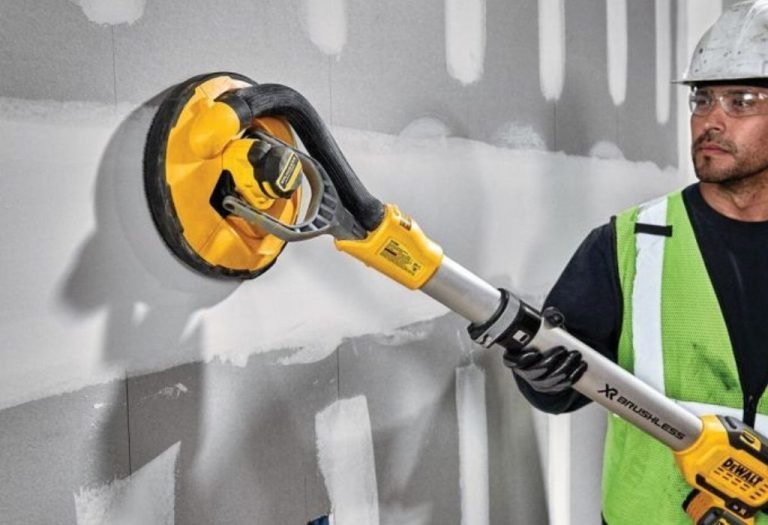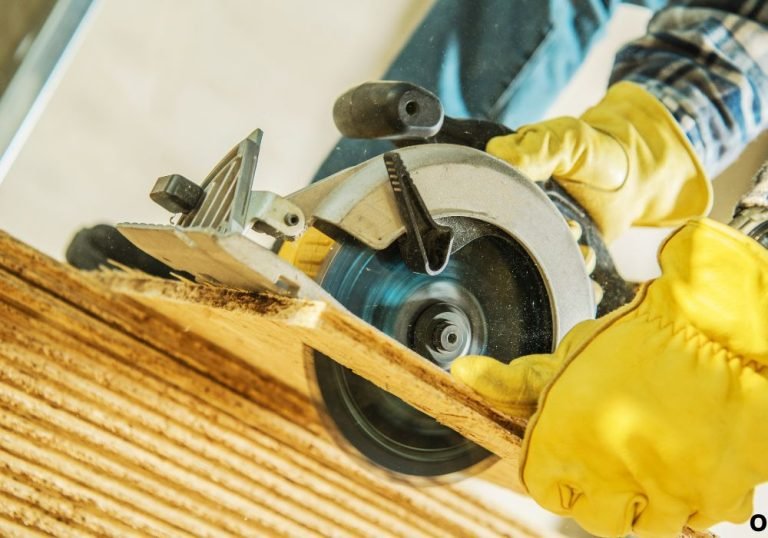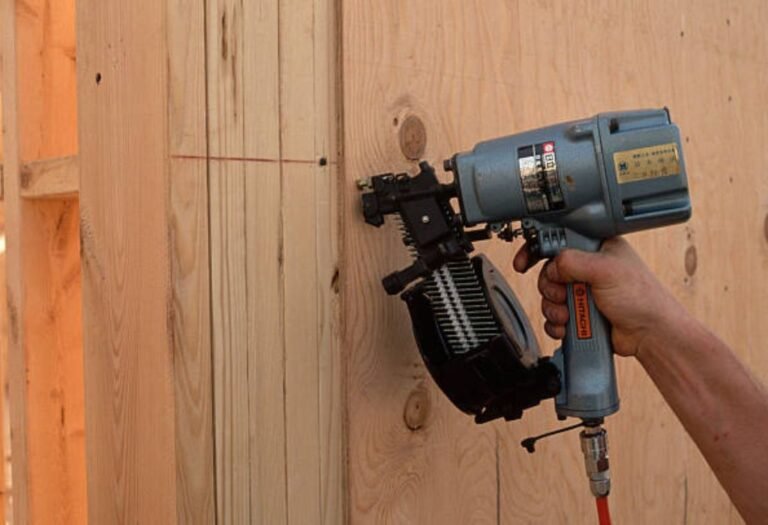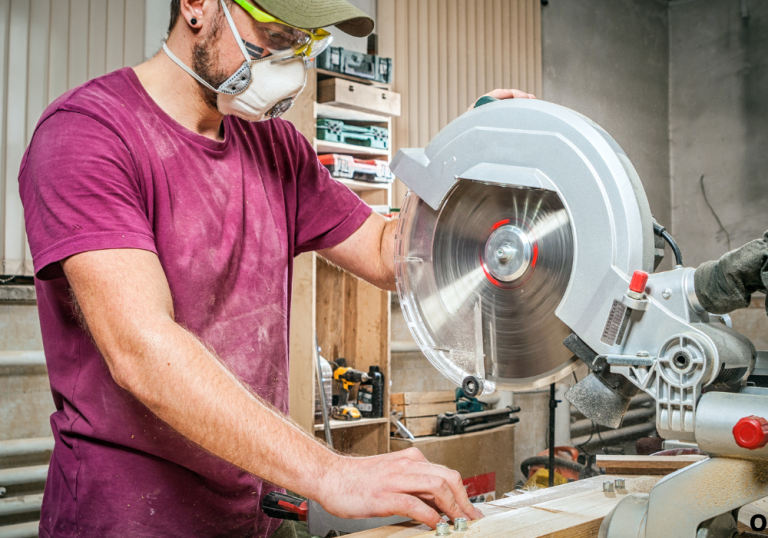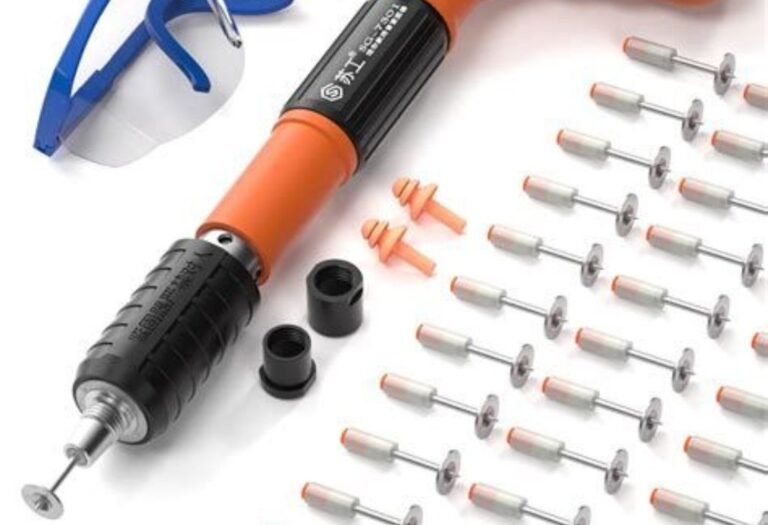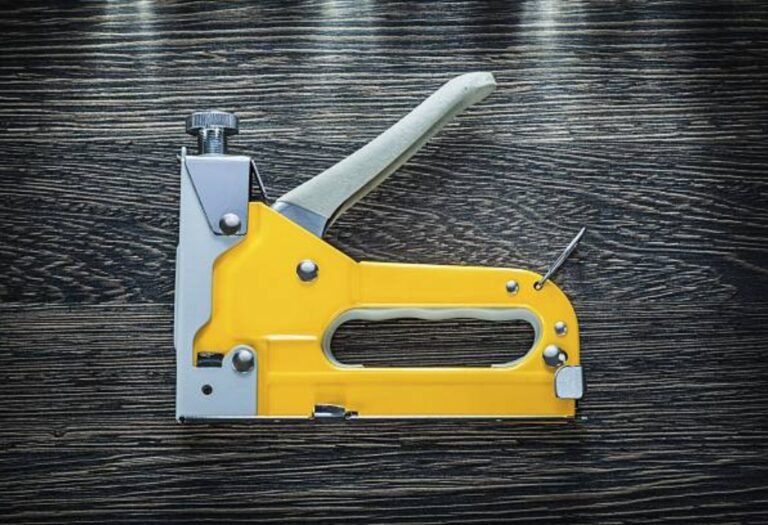How Long Does a Glue Gun Take to Heat Up for Use?
Starting a craft project is exciting, but waiting for the glue gun to heat up can quickly test anyone’s patience. Many users plug it in, unsure how long it will take before it is ready.
The question “how long does a glue gun take to heat up” matters more than it seems. Using it too early often leads to weak bonds, wasted glue, and frustration.
A glue gun that is not properly heated can cause the glue to string, clump, or fail to stick. This simple mistake often ruins delicate craft projects and professional repair jobs alike.
According to industry data, the global hot glue market is expected to surpass $9 billion by 2030, driven by both DIY crafters and industrial use 【source: https://www.alliedmarketresearch.com/hot-melt-adhesives-market】.
With such demand, manufacturers are investing in faster heating technologies and safer designs.
Heating time depends on several factors, including wattage, size, and whether the gun is low-temp, high-temp, or dual-temp.
Mini glue guns may heat up in as little as 2 minutes, while larger models can take up to 8 minutes.
Understanding the heating time ensures projects start smoothly without damaging materials. It also prevents safety hazards like burns, dripping glue, or overheating.
This guide will explain typical heating times, factors that affect warm-up speed, and tips for using a glue gun effectively.
By the end, you will know exactly how to prepare your tool for crafts, home repairs, or professional projects.
How Long Does a Glue Gun Take to Heat Up?
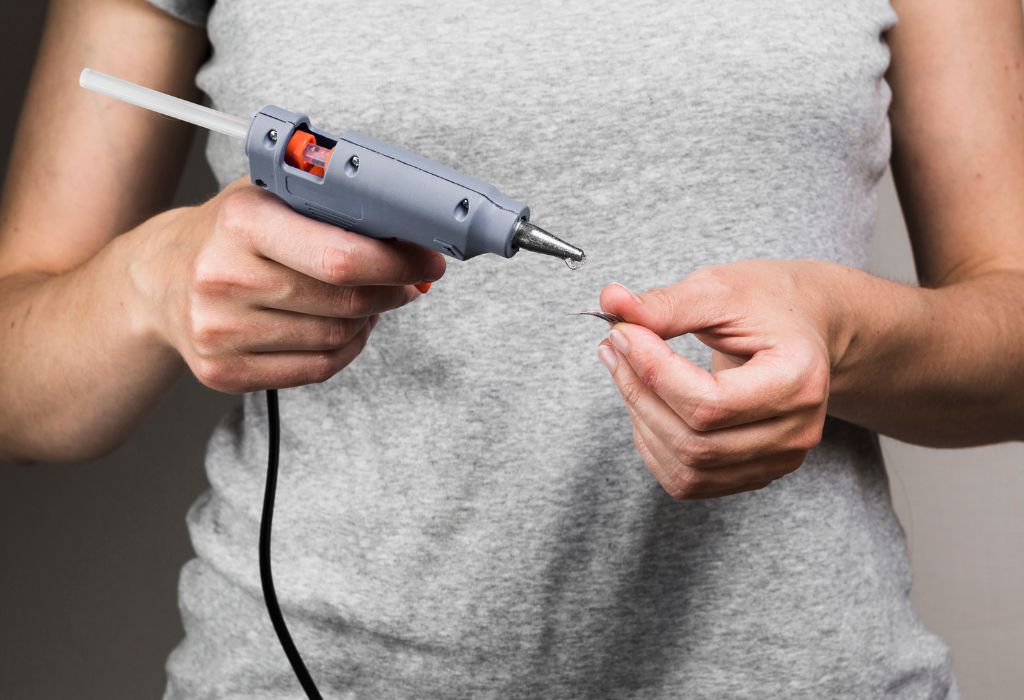
Most glue guns take between 3 and 8 minutes to heat up, depending on the size and power. Mini low-temperature models are usually faster, while full-size guns take longer.
A mini low-temp glue gun can reach working temperature in about 2–4 minutes. Standard high-temp glue guns may need 5–8 minutes to fully melt the stick.
Industrial or professional-grade guns designed for heavy use may require 8–10 minutes. Their powerful heating elements take more time but produce stronger, consistent results.
The heating time also depends on the glue stick material, as specialty sticks may melt at different temperatures. Always check the packaging for manufacturer recommendations.
How long does a mini glue gun take to heat up?
About 2–4 minutes on average.
Do high-temp glue guns take longer?
Yes, they usually need 5–8 minutes.
Can I use it before fully heated?
No, it leads to weak glue bonds.
How do I know it’s ready?
When glue flows smoothly without forcing.
Factors That Affect Glue Gun Heating Time
The wattage of a glue gun plays the biggest role in heating speed. A higher wattage unit heats faster because it uses more energy to warm the element.
Size also matters, since smaller mini guns heat up quicker due to their compact heating chambers. Larger full-size guns take longer but maintain heat better.
Temperature setting is another factor. Low-temp guns reach their target faster since they need less heat, while high-temp models require more energy.
Brand and quality also affect heating times. Premium brands often include advanced heating technology that improves speed and consistency.
Do expensive glue guns heat faster?
Often yes, thanks to better heating elements.
Does size affect heating speed?
Yes, mini guns heat up faster than large ones.
Does dual-temp take longer?
Slightly, since it adjusts between two settings.
Do cheap models take longer?
Yes, low wattage models generally warm up slower.
Glue Gun Temperature Settings Explained
Low-temp glue guns heat to about 250°F, making them safer for delicate materials like fabric and foam. They also heat faster because they need less energy.
High-temp glue guns reach around 380°F and are better for wood, metal, and tough surfaces. These models take longer to preheat but provide stronger bonds.
Dual-temp glue guns allow users to switch between low and high settings. This makes them versatile for both delicate crafts and heavy-duty projects.
Choosing the right temperature depends on the materials being used. Always match the temperature to the project for best results.
What temp is best for fabric?
Low-temp around 250°F.
What temp for wood or metal?
High-temp around 380°F.
Can all guns switch temps?
No, only dual-temp models can.
Does low-temp heat faster?
Yes, because it requires less energy.
How to Know When a Glue Gun Is Ready
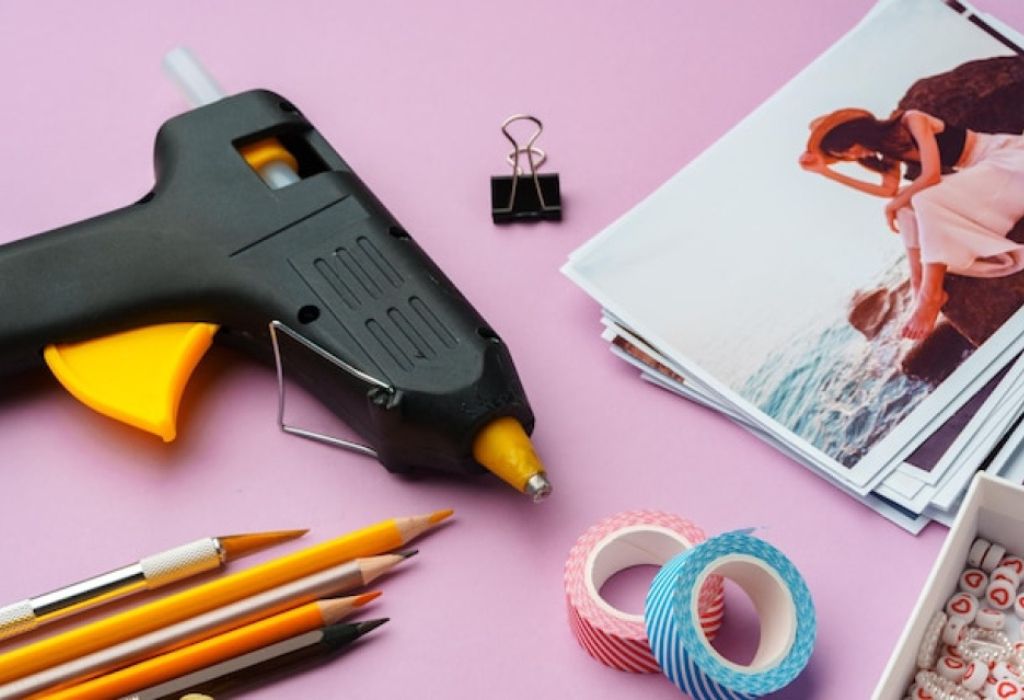
Modern glue guns often include indicator lights to show when they are heated. These are reliable signals but not available on every model.
A good sign is when glue flows smoothly with gentle trigger pressure. If you need to force it, the gun is not ready.
The absence of smoke or burning smell also shows the gun is heating properly. Overheating can damage glue sticks and the tool itself.
Testing on scrap material is the safest way to confirm readiness before applying glue to your project.
Do all glue guns have indicator lights?
No, only some models include them.
How long should I wait if unsure?
At least 5 minutes for most models.
Why does glue drip before use?
It means the gun is warming but not fully ready.
Can overheating damage the gun?
Yes, it shortens the tool’s lifespan.
Common Mistakes with Glue Gun Heating
One of the most common mistakes is using the glue gun too early. This leads to stringy glue and poor adhesion.
Leaving a glue gun plugged in for hours can overheat the tool. It also wastes electricity and increases the risk of fire hazards.
Another mistake is forcing the glue stick into the chamber before the gun is hot. This causes jams and may damage the feeding mechanism.
Users often ignore the instructions provided by the manufacturer, which results in safety issues and inconsistent performance.
What happens if I use it too early?
The glue bonds weakly and peels off.
What happens if I overheat it?
It may clog or damage the heating element.
Why does glue get stringy?
Because the temperature is not correct.
Can I speed up heating with a lighter?
No, it is unsafe and damages the tool.
Tips to Make Glue Gun Heat Faster and Safer
Choose a glue gun with higher wattage for faster heating times. A 60W model will warm up quicker than a 20W mini gun.
Always plug the gun into a stable power source. Using an extension cord or weak outlet may slow down heating.
Keeping the gun clean helps it heat more efficiently. Glue residue buildup can insulate the heating chamber and delay warm-up.
Preheating the gun before starting a project saves time and ensures smooth operation throughout your work.
Do cordless glue guns heat slower?
Yes, they take slightly longer than corded models.
Does cleaning help heating speed?
Yes, removing clogs improves heat transfer.
Should I preheat always?
Yes, it ensures consistent bonding.
Can I leave it on during breaks?
Yes, but always place it on a stand for safety.
Choosing the Right Glue Gun for Your Needs
Mini glue guns are best for small crafts and quick fixes. They heat up quickly and are lightweight to handle.
Full-size guns are designed for larger projects and heavy-duty use. They take longer to preheat but deliver more glue per trigger pull.
Low-temp models are safer for children and delicate materials. High-temp guns are stronger and suitable for demanding applications.
Popular brands like Surebonder, Gorilla, and Stanley produce reliable models with fast heating times.
Which type heats fastest?
Mini low-temp glue guns.
Are cordless models good?
Yes, but they need frequent charging.
Which brand heats fastest?
Surebonder and Gorilla often rank high.
Do wattages matter?
Yes, higher wattage heats faster than low wattage.
Safety Precautions While Using a Hot Glue Gun
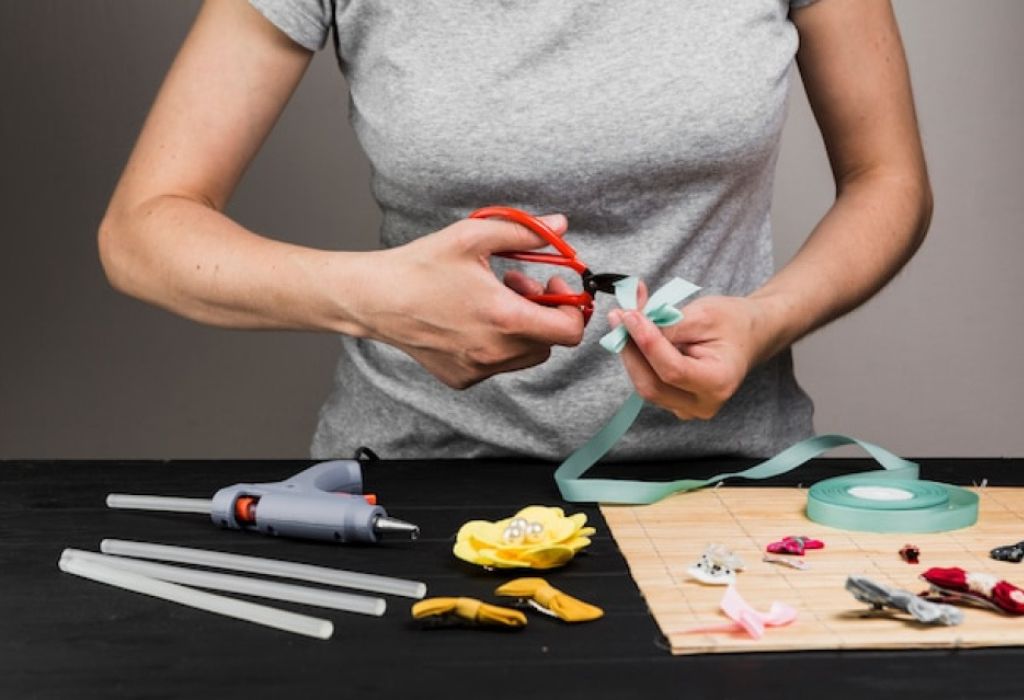
Always place the glue gun on a stand or heat-resistant mat while heating. This prevents accidents and surface damage.
Keep glue guns out of children’s reach. Even low-temp models can cause painful burns.
Avoid direct skin contact with melted glue. Hot glue can cause severe burns at both low and high temperatures.
Always unplug the glue gun when not in use. This prevents fire hazards and conserves energy.
Can a glue gun burn skin?
Yes, it reaches 250–380°F.
Is hot glue toxic?
No, but fumes should not be inhaled.
Can I leave it plugged in overnight?
No, it is a serious fire hazard.
Do I need gloves?
Yes, heat-resistant gloves are recommended.
Future of Glue Gun Technology
Manufacturers are developing fast-heating ceramic elements that reduce warm-up times. Some models already heat in under 60 seconds.
Smart glue guns with digital temperature controls are becoming more common. These allow precise heat adjustments for different materials.
Cordless models powered by lithium-ion batteries are gaining popularity. They combine mobility with strong heating performance.
Eco-friendly glue sticks made from biodegradable materials are also being introduced to reduce environmental impact.
Will future glue guns heat instantly?
Yes, new technology aims for near-instant heating.
Will cordless dominate the market?
Yes, as users demand more portability.
Are eco glue sticks common?
Yes, they are becoming mainstream.
Will prices go down?
Yes, as technology becomes standard.
Conclusion
Glue guns typically take 3–8 minutes to heat up, though mini models may be ready in as little as 2 minutes. Larger or high-temp models require longer but deliver stronger bonds.
Heating times vary depending on wattage, size, and temperature settings. Choosing the right tool and preheating it properly ensures better results.
Using a glue gun safely requires patience, correct technique, and attention to temperature. Always allow the tool to heat fully before starting your project.
For anyone wondering “how long does a glue gun take to heat up,” the answer depends on the model, but preparation and safe handling guarantee success.

I’m Michael R. Turner, the founder, lead writer, and passionate DIY enthusiast behind 101diytools.com. With years of hands-on experience in home improvement and power tools, I built this platform to share practical tips, in-depth guides, and honest reviews to help DIYers of all skill levels tackle projects with confidence and the right tools.

